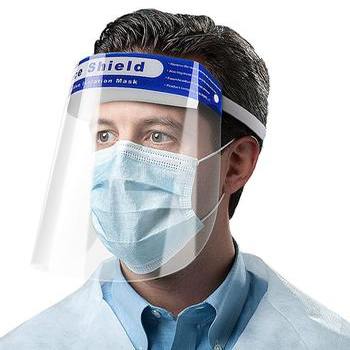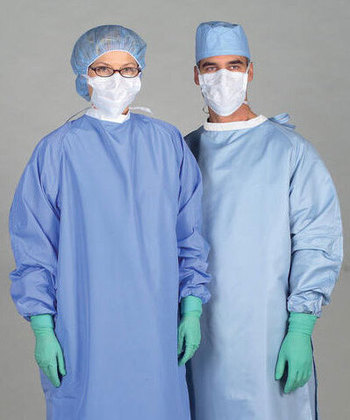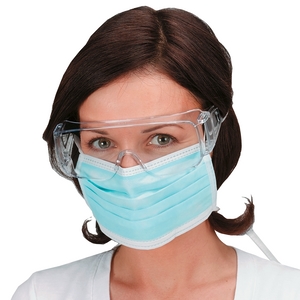
A face shield, an item of personal protective equipment (PPE), aims to protect the wearer’s entire face (or part of it) from hazards such as flying objects and road debris, chemical splashes (in laboratories or in industry), or potentially infectious materials (in medical and laboratory environments). A face shield is intended to protect the wearer’s partial or entire face and the eyes from hazards. Face shields should be used with spectacles and/or goggles.
In medical applications, “face shield” refers to a variety of devices used to protect a medical professional during a procedure that might expose them to blood or other potentially infectious fluids.
An example is the use of a CPR mask while performing rescue breathing or CPR. Another example is the use of personal protective equipment to guard the face against exposure to potentially infectious materials.The millions of potential users of face shields include healthcare workers, dental providers, veterinary care personnel, laboratory workers, pre-hospital emergency medical providers, police, firefighters, and custodial staff dealing with spills and contaminated waste
Salient Features
- More comfortable.
- Protect a larger portion of the face.
- Less retained dermal facial heat.
- More durable fog resistant coating.
- Better optical clarity.
- More comfortable fit.
- Custom flexible.
- More competitive price.

When Should You Wear A Medical Face Shield?
You should wear medical face shields when you are exposed to the possibility of spray with infectious materials. Medical face shields act as a barrier against facial area and the associated mucous membranes from airborne body fluids such as blood, saliva bronchial secretions, vomit, urine, etc. Doctors and medical assistants often wear medical face shields to avoid contamination with infectious substances. Surgeons also wear face shields when they are operating. For purposes like medical concerns, dental and veterinary procedures, face shields should be used when suctioning the airway, placing nasogastric tubes, obstetrical procedures, surgery, dental procedures, and many more.

